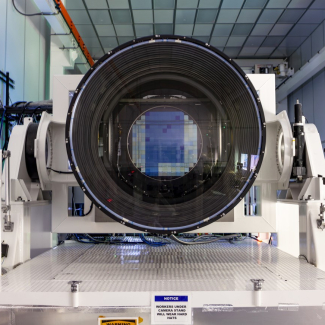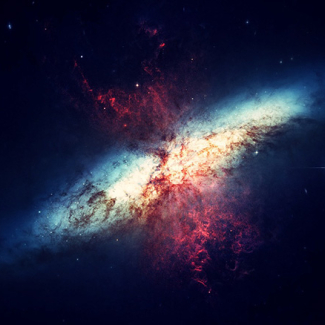
Unprecedented ground-based discovery of two strongly interacting exoplanets
Several interacting exoplanets have already been spotted by satellites. But a new breakthrough has been achieved with, for the first time, the detection directly from the ground of an extrasolar system of this type. An international collaboration including CNRS researchers1 has discovered an unusual planetary system, dubbed WASP-148, using the French instrument SOPHIE at the Observatoire de Haute-Provence (CNRS/Aix-Marseille Université). The scientists analysed the star’s motion and concluded that it hosted two planets, WASP-148b and WASP-148c. The observations showed that the two planets were strongly interacting, which was confirmed from other data2 . Whereas the first planet, WASP-148b, orbits its star in nearly nine days, the second one, WASP-148c, takes four times longer. This ratio between the orbital periods implies that the WASP-148 system is close to resonance, meaning that there is enhanced gravitational interaction between the two planets. And it turns out that the astronomers did indeed detect variations in the orbital periods of the planets. While a single planet, uninfluenced by a second one, would move with a constant period, WASP-148b and WASP-148c undergo acceleration and deceleration that provides evidence of their interaction. Their study will shortly be published in the journal Astronomy & Astrophysics.



- 1French scientists work in the following laboratories : Institut d’astrophysique de Paris (CNRS/Sorbonne Université) ; Observatoire de Haute-Provence (CNRS/Aix-Marseille Université) ; Institut de mécanique céleste et de calcul des éphémérides (CNRS/Observatoire de Paris-PSL/Sorbonne Université) ; Institut de planétologie et d'astrophysique de Grenoble (CNRS/Université Grenoble Alpes) ; Laboratoire d’astrophysique de Marseille (CNRS/Aix-Marseille Université) ; Laboratoire d'études spatiales et d'instrumentation en astrophysique (CNRS/Observatoire de Paris-PSL/Sorbonne Université/Université de Paris). They also colaborated with amateur astronomers from Hubert-Reeves Observatory.
- 2Mesures made with Hubert-Reeves telescope, France, and using SuperWASP, RISE, Carlos Sánchez and Liverpool, Canary Islands, Spain.
Discovery and characterization of the exoplanets WASP-148b and c. A transiting system with two interacting giant planets, by G. Hébrard, R.F. Díaz, A.C.M. Correia, A. Collier Cameron, J. Laskar, D. Pollacco, J.-M. Almenara, et al. Astronomy & Astrophysics, 2020 (ready for printing)
Preliminary document was submitted on arXiv on 30 april 2020 (https://arxiv.org/abs/2004.14645) and is now available in Astronomy and Astrophysics (https://www.aanda.org/articles/aa/pdf/forth/aa38296-20.pdf).


